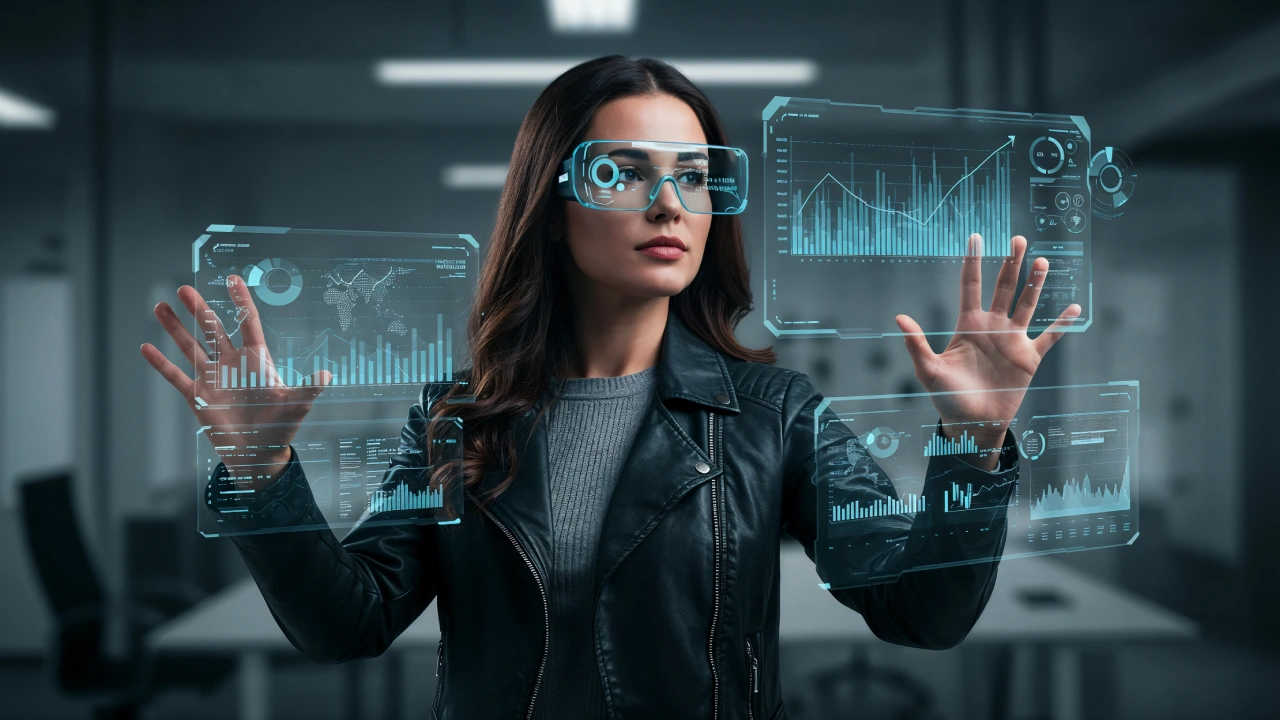By Arisha Jamal
Copyright techgenyz

Automation is not the enemy of work but the force of change, sometimes seen as challenging and disruptive.History shows that as machines advance, humans shift into new roles, which tend to become more rewarding and creative.Factories need skilled technicians, retailers need customer-focused associates, and hospitals need empathetic caregivers, all allowed by automation.
The future of Work has always carried with it the fear that machines will take our jobs. For as long as machines have been a part of human life, there has always been this fear. The arrival of any new technology is sure to spark headline warnings of how future humans will be put on the sidelines, while robots and algorithms will do all the work.
From factory assembly lines to office cubicles, it sometimes does seem as though automation is chipping away at the need for human labor altogether. But, taking a closer look, we can find that actually work is not disappearing but simply evolving.
Every era of technological change has altered the way we live our lives, in turn changing how we earn a living. The Industrial Revolution, for instance, replaced many manual machines with automated ones, but it also created several new industries, ranging from fabric production to machine maintenance.
The rise of computers, on the other hand, eliminated many clerical jobs, yet it gave birth to completely new fields such as IT support, digital design, and software engineering. The same thing is happening now. Automation is not erasing the need for workers; rather, it is reshaping the different roles that were available, pushing away from repetitive tasks and towards work that now requires a level of creativity, judgment, and empathy.
Are Jobs Really Vanishing?
Upon examining the current market ecosystem, it is easy to believe that automation is simply replacing people. In the past, when automatic cash machines, or ATMs, appeared, many predicted that it was the end of bank tellers. In reality, the number of tellers actually grew significantly afterwards, with banks opening more branches and shifting their employees into either customer service or advisory roles.
We can also see a similar pattern repeating across the industry, with machines taking over mundane and repetitive tasks while humans move into roles that require decision-making and problem-solving. This does not mean that the transition is painless. Jobs change; sometimes they even completely disappear, but they more often reemerge in new forms. This illustrates a central truth about the future of work – jobs don’t vanish; they evolve.
Tasks evolve, new skills are required, and the workplace must find a new balance where machines complement humans, not replace them.
Manufacturing: Smart Factories and The New Factory Floor
The area where the impact of workplace automation is most visible is probably in the realm of manufacturing. Take a walk into a modern car plant, and we will see a scene of robotic arms welding, painting, and assembling parts with stunning precision. It might even look as though humans are completely absent, but workers are still present on the factory floor; only their responsibilities have been changed.
Instead of tightening screws and bolts by hand or moving around heavy materials, many factory employees now take charge of managing machines, monitoring production, and troubleshooting if and when something goes wrong. Roles have become more technical in the present, often requiring specialized training. In return, work often becomes safer and better paid.
The so-called “smart factories” demand not only well-oiled robots but also skilled workers who can interpret data, program machines, and ensure that production remains smooth at all times. Automation has not removed humans from the factory floor; it has elevated them to altogether different roles.
Retail: Beyond the Checkout Counter
The digital age has also reshaped retail. In recent years, the world of retail has also undergone a major transformation. With the rise of online shopping and self-checkout kiosks, many assumed that a more contactless approach would completely erase traditional cashiers and sales jobs. The checkout process may be increasingly automated, but other sections of retail still regard workers as essential.
The employees of today spend less time scanning for items and more time assisting customers in more meaningful ways, be it tracking down products, advising on certain purchases, or handling orders online. Take clothing stores, for instance. Associates here often take a more advisory role, offering fashion suggestions that no algorithm can replicate.
Behind the scenes, warehouses may be filled with rows and rows of conveyor systems and robots, yet humans are still needed to handle the various exceptions and maintain overall accuracy. In this case as well, instead of eliminating retail work, it has been reshaped into something that is more service-oriented and customer-centered.
Healthcare: Machines and Humans Working In Tandem
Few professions exist that illustrate this symbiosis between humans and machines better than healthcare. Advances in the field of Artificial Intelligence now allow computers to analyze medical images with pinpoint accuracy, detecting patterns that even trained radiologists may miss. Yet, these tools have not replaced the need for doctors. Physicians remain central while interpreting results and, more importantly, while speaking to patients. Roles like these cannot be taken over by AI, as the empathy and judgment of a human being are irreplaceable.
Nurses, too, have greatly benefited from automation, freeing them to focus on empathetic caregiving. With machines taking care of monitoring tasks such as constantly checking for vital signs, managing patient records, and performing routine checks, caregivers can focus on what matters most: patient care.
The rise of telemedicine has also created entirely new responsibilities, from managing virtual appointments to guiding patients through digital platforms, further redefining the future of work in healthcare. Here, the use of technology further amplifies human ability, turning healthcare into a more collaborative effort.
Finance: Transactions and Trust
Another sector that has seen a transformation due to automation is finance. Transactions are now being processed by computers, removing the risk of human error. But this deems human workers far from unnecessary, as these shifts rather highlight the importance of trust, advice, and reassurance.
Bank tellers who once spent their days keeping accounts now assist customers with complex issues, while financial advisors guide clients through the uncertainties of the economic market. At the same time, compliance officers, cybersecurity experts, and fraud specialists have become an essential part of the world.
In terms of finance, automation handles the numbers, but humans safeguard integrity. People have been pushed upwards into roles that depend on relationships and trust, moving away from routine transactions.
Agriculture: Farming in the Digital Age
Agriculture has always embraced new tools, from the usage of the humble plow to the modern tractor. Today, farming has been increasingly taking a more digital route, with drones monitoring crops, soil conditions being measured through sensors, and other systems optimizing irrigation. On the surface, it seems as though the machines are taking over, but in reality, farmers are taking on new responsibilities as managers of information as well as land.
Modern farmers take into account the data analyzed by modern systems to make decisions based on real-time insights. Technicians who can maintain drones and calibrate smart equipment are in high demand. The farmer of today is someone who has digital expertise as well as traditional knowledge. Farmers now act as data managers as well as land managers, using real-time insights to optimize yield.
The Bigger Picture
When we take a step back, a clear pattern emerges. Automation is not outright erasing jobs; it is changing them. Machines are taking charge of repetitive tasks, freeing us humans to focus on areas where we can excel. At the same time, new industries and roles spring up to support and manage the very devices that are being built to transform work.
The challenge, then, is not the loss of a job but rather its transition. Workers must continually adapt, learning new skills and embracing lifelong education. Companies must also invest in reskilling and support, while governments must ensure policies and safety nets are kept in place, keeping up with the changes of modern times.
The future of work is not about machines replacing humans, but about machines and humans working together, each supporting the other’s strengths. Far from disappearing, jobs are evolving, and in that evolution lies the promise of a workplace that is both more efficient and more human.



